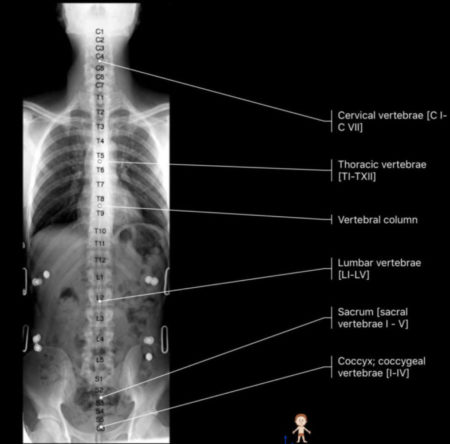It is important for victims to understand that the location of their spinal cord injury has a direct effect on the extent of their condition.
Cullotta Law Offices provide their clients with information and education on spinal cord injury, along with offering comprehensive and aggressive representation.
To learn more about spinal cord injuries, please see below and our spinal cord injury page. Or contact our firm today for free case consultation.
Cervical (neck) personal injury (C1 – C8)
- C1 or atlas: C1, along with C2, forms the joint connecting the skull and spine.
- C2 or axis: Forms the pivot upon which C1 rotates.
Injuries to C-1 and C-2 can result in a loss of many involuntary functions (e.g., inability to breathe) requiring breathing aids (e.g., ventilators or diaphragmatic pacemakers)
- C4 (cervical vertebra): The fourth cervical (neck) vertebra.
Injuries above the C-4 level may require a ventilator for the person to breathe properly.
- C5 (cervical vertebra): The fifth vertebrae from the base of the skull.
Injuries to C-5 often have no control at the wrist or hand.
- C6 (cervical vertebra): The sixth cervical (neck) vertebra from the top.
- C7 (cervical vertebra): The last cal (neck) vertebra from the top.
An injury to the spinal cord between C6 and C7 vertebrae is called a C6-7 injury. These injuries generally allow wrist control, but no hand function.
Injuries to C-7 and T-1 can straighten their arms but still may have dexterity problems with the hand and fingers. Injuries at the thoracic level and below result in paraplegia, with the hands not affected.
Thoracic Vertebrae (T1 – T12) personal injury
- T1-T12 (Thoracic Vertebra): Provide attachment for the ribs.
Spinal cord injuries above the T1 vertebra affect the arms and the legs. Injuries below the T1 vertebra affect the legs and trunk below the injury.
Paraplegia — is paralysis of the legs.
Quadriplegia — is paralysis of the arms and legs.
- T-1 to T-8 (Thoracic Vertebra): often control of the hands
- T-9 to T-12 (Thoracic Vertebra): allow good trunk control and abdominal muscle control.
Lumbar Vertebrae (L1 – L5) Injuries
- L1 (Lumbar Vertebra): starts at the ninth rib.
- L3 – L5 (Lumbar Vertebra): involve much of the motion in the back
- L4 – L5 and L5 – S1 (Lumbar Vertebra): are the most often herniated disc
other types of disc injury include
- bulging disk, compressed disk, herniated intervertebral disk, herniated nucleus pulposus, prolapsed disk, ruptured disk, slipped disk).
The effects of this can cause pain and numbness that can radiate through the leg and extend down to the feet (sciatica).
Sacral Spine (S1 – S5) personal Injury
- S1-S5: are the five bones that fit between the two hipbones connecting the spine to the pelvis.
You do not have to face your spinal cord injury alone. Contact our spinal cord, personal injury attorney at Cullotta Law Offices. Learn more about spinal cord injuries and how we handle these and other personal injury matters. Call us at 847-651-7191 any time of the day to schedule your free consultation.
